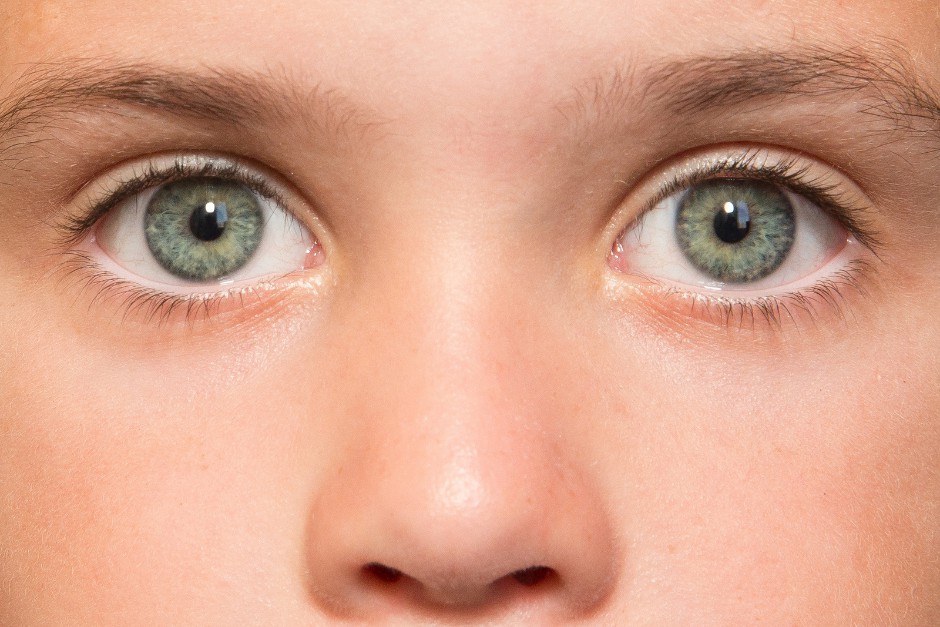Cone rod dystrophy is a rare hereditary eye illness that damages the cone and rod cells in the retina, causing vision loss and perhaps blindness. This article will go over cone rod dystrophy in detail, including its definition, causes, symptoms, and treatment options. We will also discuss how cone rod dystrophy affects visual acuity, the processes involved, and the special issues it offers to children and people with poor vision.

What Is Cone Rod Dystrophy?
Cone rod dystrophy is a genetic eye disease characterized by the gradual deterioration of the retina’s cone and rod cells. Cones are responsible for color perception and central vision, whereas rods are responsible for peripheral and low-light vision. Vision loss and low visual acuity arise from the damage to these cells.
 Rods and cones are the two kinds of photoreceptor cells found in humans. Cones are crucial for central (reading) vision, as well as letting us perceive color and detail in strong light. Rods are in charge of low-light vision and peripheral vision (side vision). Cone dystrophy affects just the cone cells, whereas cone-rod dystrophy affects both the rods and the cones.
Rods and cones are the two kinds of photoreceptor cells found in humans. Cones are crucial for central (reading) vision, as well as letting us perceive color and detail in strong light. Rods are in charge of low-light vision and peripheral vision (side vision). Cone dystrophy affects just the cone cells, whereas cone-rod dystrophy affects both the rods and the cones.
As a result, patients typically begin to have problems with their central vision and color vision, while those with cone-rod dystrophy also experience problems with their peripheral vision and difficulty seeing in low light (night blindness). They may run into objects that appear on either side of their view. Symptoms often appear in childhood and extend until early adulthood, with increasing impairment of visual function over time.
How Does Cone Rod Dystrophy Affect Vision?
Cone rod dystrophy is a rare hereditary eye disease that impairs the functioning of the eyes’ cones and rods, resulting in vision loss and poor visual acuity.
Furthermore, cones are essential for color vision. They comprise of short, medium, and long wavelength cones – three different types of receptors that enable us to sense a broad variety of colors. Cone rod dystrophy, on the other hand, disrupts the function of these cones, which leads to color vision anomalies and a loss of the capacity to interpret colors appropriately.
 Besides, cones are essential for color vision. They comprise of short, medium, and long wavelength cones – three different types of receptors that enable us to sense a broad variety of colors. Cone rod dystrophy, on the other hand, disrupts the function of these cones, which leads to color vision anomalies and a loss of the capacity to interpret colors appropriately.
Besides, cones are essential for color vision. They comprise of short, medium, and long wavelength cones – three different types of receptors that enable us to sense a broad variety of colors. Cone rod dystrophy, on the other hand, disrupts the function of these cones, which leads to color vision anomalies and a loss of the capacity to interpret colors appropriately.
Cones are essential for visual acuity as well as color perception. They require more light to deliver messages to the brain than rods, allowing humans to focus on objects and comprehend fine details. Cone rod dystrophy, sadly, can impede cone function, causing a reduction in visual acuity and difficulty to focus on certain objects.
One of the distinguishing features of cone rod dystrophy is its effect on visual acuity. Individuals’ visual acuity may deteriorate as the condition proceeds, with some cases ending in 20/200 vision or worse. This level of vision impairment is regarded as legally blind and has a significant impact on everyday activities and independence.
 It is critical to understand the cause of cone rod dystrophy in order to find suitable treatments. While there is no treatment for the illness at the moment, several therapies try to control its symptoms and limit disease development. Treatment options may include low vision equipment such as magnifiers or telescopes, which can help people with low vision improve their visual perception and independence.
It is critical to understand the cause of cone rod dystrophy in order to find suitable treatments. While there is no treatment for the illness at the moment, several therapies try to control its symptoms and limit disease development. Treatment options may include low vision equipment such as magnifiers or telescopes, which can help people with low vision improve their visual perception and independence.
What is the Cause of Cone Rod Dystrophy?
Genetic abnormalities that alter the cone and rod cells’ structure and function in the retina are the main cause of cone rod dystrophy. These genetic changes can be inherited from either one or both parents, resulting in a variety of inheritance patterns.
Cone rod dystrophy is commonly caused by genetic disorders that affect the normal growth and function of photoreceptor cells in the retina. Cone rod dystrophy has been linked to mutations in particular genes such as the ABCA4, CRX, and RPGR. These gene mutations disrupt the generation or function of proteins required for cone and rod function, resulting in distinctive visual abnormalities.
 Cone rod dystrophy can be inherited in a variety of ways, including autosomal dominant, autosomal recessive, and X-linked inheritance. An afflicted person receives two copies of the defective gene from each parent when an autosomal recessive mutation is present. When an individual receives just one copy of a mutated gene, generally from an afflicted parent, this is known as autosomal dominant inheritance. The mutation of genes on the X chromosome causes X-linked inheritance, which mostly affects men.
Cone rod dystrophy can be inherited in a variety of ways, including autosomal dominant, autosomal recessive, and X-linked inheritance. An afflicted person receives two copies of the defective gene from each parent when an autosomal recessive mutation is present. When an individual receives just one copy of a mutated gene, generally from an afflicted parent, this is known as autosomal dominant inheritance. The mutation of genes on the X chromosome causes X-linked inheritance, which mostly affects men.
Because the traits of cone rod dystrophy are inherited, those with a family history of the disease are more likely to acquire it. Genetic testing and counseling can assist in determining the precise gene mutations implicated and offer crucial information about the possibility of the problem being passed down to future generations and avoid children’s blindness.Article Sponsored Find something for everyone in our collection of colourful, bright and stylish socks. Buy individually or in bundles to add color to your sock drawer!
 One of the most serious consequences of cone rod dystrophy is its influence on visual acuity. Individuals’ visual acuity, or the clarity of their vision, may deteriorate as the condition advances. Cone rod dystrophy can result in 20/200 vision or worse in extreme situations. A person with normal vision can see at a distance of 200 feet while a person with cone rod dystrophy can only perceive at a distance of 20 feet, according to the definition of visual acuity of 20/200. This level of visual impairment is deemed legally blind, and it can have a significant impact on a person’s everyday activities and independence.
One of the most serious consequences of cone rod dystrophy is its influence on visual acuity. Individuals’ visual acuity, or the clarity of their vision, may deteriorate as the condition advances. Cone rod dystrophy can result in 20/200 vision or worse in extreme situations. A person with normal vision can see at a distance of 200 feet while a person with cone rod dystrophy can only perceive at a distance of 20 feet, according to the definition of visual acuity of 20/200. This level of visual impairment is deemed legally blind, and it can have a significant impact on a person’s everyday activities and independence.
What Are Cone Rod Dystrophy Symptoms?
Understanding the symptoms of cone rod dystrophy is critical for identifying the problem and obtaining proper diagnosis and treatment. Let’s look at some of the symptoms that people with cone rod dystrophy typically face.
A reduction in visual acuity is one of the key signs of cone rod dystrophy. The sharpness and clarity of eyesight are referred to as visual acuity. People may notice a progressive decline in their ability to perceive tiny details, read small text, or identify faces as the condition develops. Loss of visual acuity can have a substantial impact on daily tasks that need clear vision, such as reading, driving, or identifying distant objects.

Color vision difficulties are another prevalent symptom of cone rod dystrophy. Because cones are crucial for color vision, their malfunction can cause difficulty in appropriately seeing and discriminating colors. Color vision problems, such as diminished color intensity or difficulty distinguishing between particular colours, may occur in people with cone rod dystrophy. Colors may look faded, washed out, or distorted, impairing visual perception.

People who have cone rod dystrophy may also have photophobia, sensitivity to light, along with visual acuity and color vision abnormalities. Bright lights, direct sunshine, or even ordinary interior illumination can cause discomfort, glare, and visual problems. Photophobia can make it difficult to tolerate well-lit situations, necessitating the use of sunglasses or other protective measures to minimize light sensitivity.
Another typical sign of cone rod dystrophy is night blindness, also known as nyctalopia. Night blindness is the inability to see well in low-light circumstances or at night. Rod cell failure, which is crucial for seeing in dimly illuminated surroundings, may result in poor adaptation to darkness, making it difficult to navigate in low-light circumstances.
 Some people with cone rod dystrophy may also have tunnel vision, which is a lack of peripheral vision. We can perceive objects and activity on the outside of our visual area thanks to peripheral vision. The person’s ability to see items or individuals positioned outside their central vision may be hampered by a shrinking of the visual field. This has the potential to impair spatial awareness, movement, and total visual perception.
Some people with cone rod dystrophy may also have tunnel vision, which is a lack of peripheral vision. We can perceive objects and activity on the outside of our visual area thanks to peripheral vision. The person’s ability to see items or individuals positioned outside their central vision may be hampered by a shrinking of the visual field. This has the potential to impair spatial awareness, movement, and total visual perception.
It is crucial to remember that the symptoms and severity of cone rod dystrophy can differ across individuals. Some people’s symptoms may advance more quickly, while others may endure a delayed deterioration in eyesight. Furthermore, the age of symptom development might vary, with some people experiencing symptoms as children and others developing them later in life.
Even though there is no cure for cone rod dystrophy at the moment, a variety of therapy choices and tactics can help control symptoms and improve quality of life. Magnifiers, telescopes, and specialty glasses can improve visual acuity and help with reading and other visual activities. Furthermore, adaptive techniques and technology such as large-print materials, high-contrast displays, and voice-controlled gadgets can help people with cone rod dystrophy gain independence and accessibility.
Regular eye exams, early detection, and on-going monitoring are critical in controlling cone rod dystrophy and resolving any abnormalities in visual function. People with cone rod dystrophy can benefit from customized care and support from eye care experts such as ophthalmologists and low vision specialists, who can advise them on treatment choices, visual aids, and lifestyle changes to improve visual performance and quality of life.
References
https://medlineplus.gov/genetics/condition/cone-rod-dystrophy/
https://www.orpha.net/consor/cgibin/OC_Exp.php?Lng=GB&Expert=1872
https://rarediseases.org/rare-diseases/cone-dystrophy/
https://gene.vision/knowledge-base/cone-cone-rod-dystrophy-for-patients/

